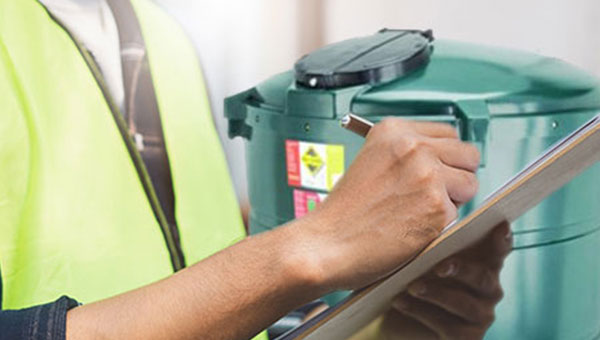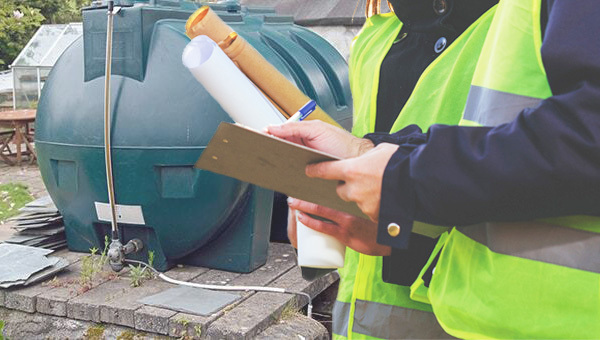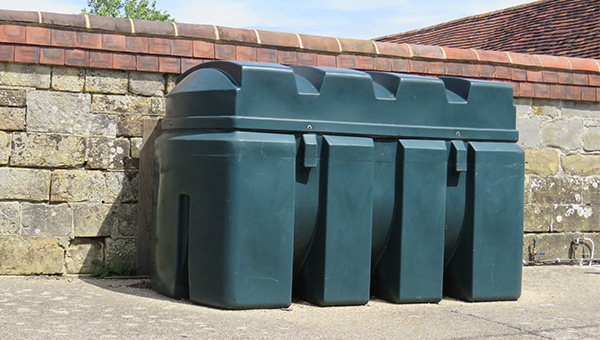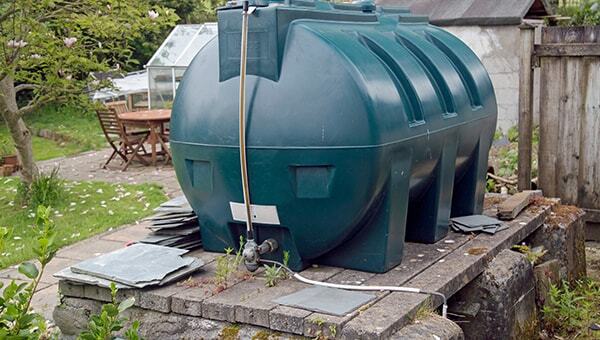Deciding which oil storage tank you need can be quite difficult when there are so many different styles, shapes and capacity options to choose from. So what do you need to know in order to make the right decision? That is the question we shall try to help you answer in this article.
Before you can choose the right type of tank for your property, you need to have answered the following questions:
- Do you need an oil tank for a residential or commercial property?
The rules and regulations for installing oil storage tanks do differ between residential and commercial applications, so you need to make sure you know which ones you should be following. Check out the Government's Oil Storage Regulations for more information.
- How much space do you have for an oil tank?
To comply with the relevant guidelines, you will need to have a space on your property that fits within the "Goldilocks" zone of not being too near a building for fire safety, being close enough for connection to your heating system, and being nowhere near a watercourse. Knowing what space you have will help you decide what the most suitable tank profile will be.
- What size oil storage tank do you need for your property?
Generally speaking, the larger your oil tank, the more oil you can store, and the more oil you can store, the longer you can go between refills. That being said, a 3500 litre tank that can supply a boiler capable of heating a five bed house with twenty radiators is probably a bit overkill for a two-up-two-down property that only has four radiators. You definitely don’t want to undersize your tank, but oversizing it for the sake of bulk buying could be a case of false economy if you aren’t careful. Check out our basic guide to oil storage tanks for more advice on choosing a tank size.
With the answers to these questions in your back pocket, you’ll be better prepared to make an informed decision about which type of oil storage tank will be best for you.
Types of Oil Storage Tanks Available
When it comes to oil storage tanks, there are three choices to make:
- Tank Material
- Tank Shape/Profile
- Tank Structure
Knowing what you want and need from your oil tank will greatly help you narrow down all the available options out there and make choosing the right tank for your property a lot easier. With that in mind, let’s take a look at each of them to see what you need to know.
What material do you want your oil tank to be made from?
When it comes to oil storage tanks, there are only really two possible material options; steel or plastic. If manufactured to the correct standards, both materials can be used to create perfectly good oil tanks that will serve you well. So what’s the difference then? Why should you choose one over the other? Let’s take a look at them now to find out.
Plastic Oil Storage Tanks
Plastic tanks are the industry standard for oil storage in the UK, especially for domestic applications, for the following reasons:
- Durable - plastic tanks are made from a hard-wearing polyethylene that offers structural integrity while also being pliable enough to forgive deformations if corrected quickly.
- Seamless design - plastic tanks are roto-moulded to form a single unit without seams or joints, making them less prone to weak points that can split or fail, thus helping to minimise the risk of leaks.
- Cheaper to buy - plastic oil tanks are less costly to manufacture and can be more easily produced in bulk for "off-the-shelf" sales, making them a good option for domestic projects on a budget.
- Good life expectancy - many plastic tanks can last up to 20 years if properly maintained.
- Lightweight - plastic tanks are lighter than their steel counterparts, making them easier to transport, manoeuvre, and install.
- Reduce carbon footprint - polyethylene is a lightweight, recyclable material, meaning that the oil tanks produced with it are comparatively less harmful to the environment.
- Reduce heat transfer - polyethylene is also a good insulator, meaning that it is better at protecting the oil stored within because it slows the transfer of heat from the external environment.
Steel Oil Storage Tanks
Steel tanks generally offer better commercial options than plastic tanks, primarily because they can be made to accommodate much larger capacities and bespoke dimension requirements. In comparison to plastic tanks, they offer the following benefits:
- Greater durability - steel tanks are highly durable and resilient against extreme weather, accidental damage, and resistant to corrosion and UV rays.
- Greater life expectancy - if properly maintained, steel tanks can last in excess of 30 years before they need replacing.
- Increased security - steel tanks are harder to drill into, making it more difficult for opportunistic thieves to siphon out your oil, and are heavier than plastic tanks, making them less of an appealing target for those inclined to try and nick the whole thing.
- Larger capacity - steel oil tanks can be made to store up to 120,000 litres of oil, whereas plastic tank sizes tend to stop at 10,000 litres. This can make them the better choice for commercial applications where larger quantities of oil need to be stored.
There are, however, some disadvantages to steel oil tanks that should be noted.
- More prone to rust - without an additional protective coat to protect them, steel tanks can be prone to rust. Internally, this can build up in the bottom of the tank and eventually block the filters. Externally, rust can weaken the structural integrity of a tank, thereby increasing the risk of costly oil spills.
- More prone to splits - steel tanks are welded together, leaving seams and joints that offer potential weakness that can split or fail thereby increasing the risk of costly structural failure and environmental damage from large scale oil spills.
- Less insulated - steel offers little heat protection to the oil within, when compared to the insulation provided by polyethylene plastic, and can be more prone to bacterial bloom that degrades oil.
- Higher maintenance - remedying all of the above points requires regular, and often costly, maintenance of your steel tank, including protective coats of paint that need reapplying from time to time. If you don’t feel ready for this level of commitment, a plastic tank might be the better way to go.
- More expensive - steel is a more expensive material to buy and more time-consuming to make oil tanks out of than plastic. The finished product is also a lot heavier, which means it costs more to transport.
- Larger carbon footprint - the manufacturing process and transportation requirements of steel tanks are typically less environmentally friendly than those for plastic tanks.
For these reasons, we prefer to recommend plastic over steel; hence why we only offer plastic oil storage tanks for sale online and in our branches. Plastic tanks offer financial and environmental savings over steel while still being durable enough to make them a good investment. Ultimately, however, the choice between them is up to you. As long as you make sure the tank you buy complies with the relevant manufacturing standards (BS EN 13341, CE marked, OFS T100 for plastic and BS 799, OFS T200 for steel), you will be getting a good tank no matter which material you choose.
What shape (profile) does your oil tank need to be?
Oil storage tanks come in a variety of shapes, and picking the right one for you will largely come down to the space you have. The options available are:
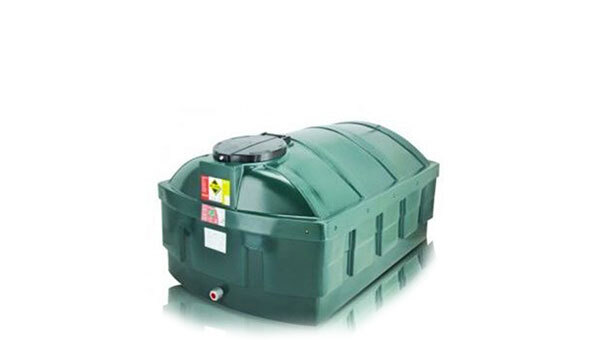
Low Profile Oil Storage Tanks
As the name suggests, low profile oil tanks sit lower to the ground than other tank types. Their reduced hight makes them better suited to people who wish to keep their tank out of sight.
- Large footprint
- Reduced height
- Reduced capacity
- Easier to conceal
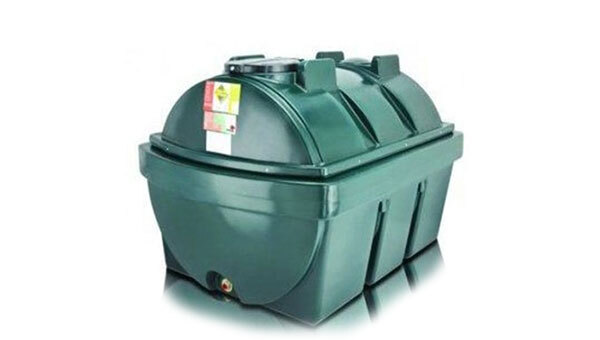
Horizontal Oil Storage Tanks
For larger properties with plenty of space to install an oil tank, the horizontal style is a good choice. As the name would suggest, the chosen capacity is achieved by increasing the width and depth of the tank more than the hight. This helps to somewhat reduce the visibility of the tank at the cost of a larger installation footprint.
- Large footprint
- Medium height
- Unrestricted capacity
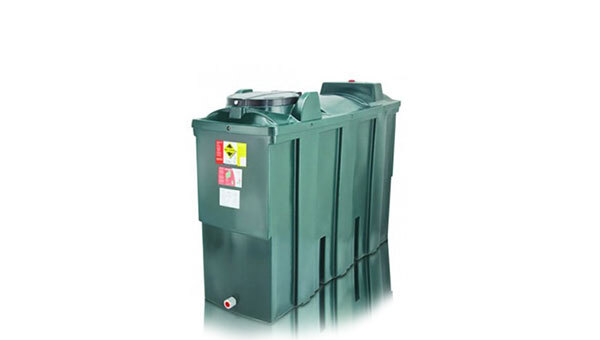
Slimline Oil Storage Tanks
For smaller properties where space to install an oil tank is especially limited, the slimline style is a good choice. They have a tall, narrow design that keeps the footprint while still achieving the required capacities.
- Narrow footprint
- Medium height
- Reduced capacity
- Ideal for space-limited installations
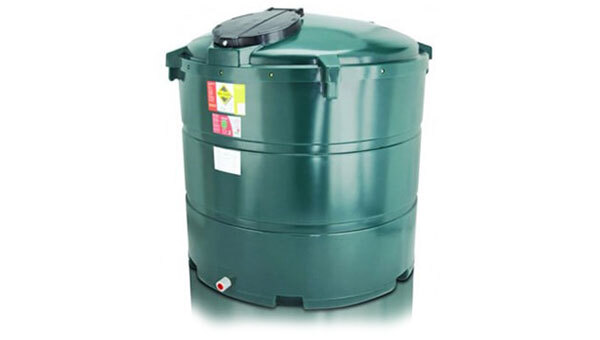
Vertical Oil Storage Tanks
For larger properties with some space limitations, the vertical oil tank style is an ideal choice. As the name would suggest, the chosen capacity is achieved by increasing the height of the tank more than the width and depth. This helps to reduce the footprint of the tank at the cost of an increased height that makes it more visible.
- Medium footprint
- Increased height
- Unrestricted capacity
If you have plenty of space for an oil tank on your property, then the world is your oily oyster; vertical, horizontal, slimline, low profile, take your pick. If space is in short supply, however, you may be forced to consider only slimline or vertical tanks to keep the tank's footprint as small as possible.
There are other considerations aside from just space, though, when it comes to choosing the look of your tank, namely aesthetics and security. If the thought of an unsightly oil tank ruining the appeal of your landscaped garden makes your eye twitch, or if fears of a clearly visible tank being a beacon for oil thieves keeps you awake at night, then a low profile tank might be a better choice. These can be more easily hidden behind a suitable screening.
Ultimately, the more restricted your options are for the safe, secure, and compliant installation of an oil storage tank, the more limited your available options of suitable tanks will be. This is why it is always important to work out what you can have before you start thinking about what you would like.
What structure does your oil tank need to have?
Oil storage tanks, be they steel or plastic, are available with either a single skin or bunded design. Given that deciding which type you will need is, arguably, the most important choice you will have to make, let us take a closer look at how they differ.
Single Skin Oil Tanks
A single skin tank has just one layer of material within which the oil is held. One layer of plastic or steel is all that separates the stored oil from the outside world. They are generally the cheaper option when it comes to storage tanks, but that comes at the cost of being the least secure solution out of the two.
Single skin oil tanks can still be suitable in certain domestic situations though. However, in England and Scotland, their installation is only allowed if an additional set of conditions are met. Primarily among them is limiting the tank size to less than a 2500 liter capacity and banning their use anywhere near a water source. For a full list of the conditions, take a look at the Single Skin Tank Regulations section in our related article.
Even if you think all of the conditions can be met, an 'oil storage risk assessment' should still be conducted by an OFTEC approved engineer before you consider installing a single skin oil tank. It is also important to note that all oil tanks must be bunded by law if you live in Wales.
If any of the conditions cannot be met at your property, or you simply don’t want to take the risk of damaging the environment (and being fined for it) should your oil tank spring a leak, then you may want to consider a bunded tank instead.
Bunded Oil Tanks
A bunded tank consists of two layers (skins). Essentially, they act as a tank within a tank. The inner tank is the main storage facility, while the outer tank acts as a safety net if there is any spillage. If a leak occurs from the inner tank, the contents will be safely caught and stored within the outer tank, avoiding any pollution incidents that can cause damage to the environment and surroundings. The outer tank also acts as a shield against external damage, helping to keep stored oil safe.
In some cases, such as if you need a tank that can hold more than 3,500 litres of oil in England, or over 2,500 litres in Scotland, a bunded tank may be your only option under current regulations. Even if that is not the case, bunded tanks are still undoubtedly the safest and most compliant way to store oil. Their advantages over single skin tanks include:
- Longer manufacturer’s warranty for extra peace of mind
- Oil can be recovered from the second skin and reused should a leak occur
- Improved security against theft as they usually have a lockable lid
- Carefully designed to prevent rainwater from entering
- Fewer conditions need to be met before the tank can be installed
The downside to any bunded tank, though, is a much higher price when compared to their single skin counterparts. However, a saving now could be a costly one in the future, should your single skin tank ever leak.
Single Skin or Bunded Oil Tank - which is best?
In terms of safety and peace of mind, bunded tanks are the clear winner. Whilst it’s true that oil spills from domestic tanks are rare, when they do happen, they are both extremely damaging to the environment and expensive to clean up. So why take the risk? Given all the extra conditions that have to be met to install a single skin tank, and the high possibility that regulations in England and Scotland will only become stricter in time, installing a bunded tank now could save you further cost and headaches in the future.
Even where current regulations might permit the use of single skin tanks, the additional environmental protection offered through the use of a bunded tank is strongly recommended for any oil storage. Single skin tanks do have their uses, and if you have a secure compound to install it in, where leaks could more easily be contained, they can definitely save you money. Just be sure to do all your research on the regulations and ensure you understand all responsibilities you'll be taking on before making your choice.
And that's it for our guide to the types of oil storage tanks available. We hope it helps you find the best oil tank for your needs. If you decide that high-quality polyethylene oil tanks are the way to go, JDP has you covered with a range of both single skin and bunded plastic Oil Storage Tanks that are OFTEC certified and comply fully with the latest Environment Agency Regulations.
Still unsure which tank is right for you? Contact us today! Our team is always ready to answer any of your questions and offer advice if you need help choosing the right one for your project.



